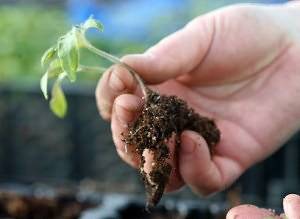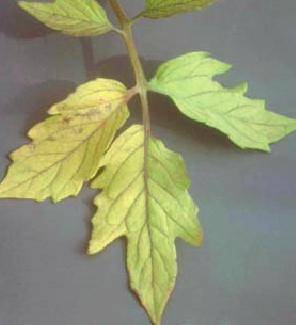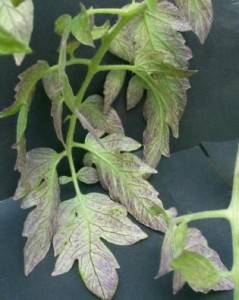Content
Tomatoes are considered a fairly resilient plant; this crop can withstand both low temperatures and extreme heat. Tomatoes can be grown in any region of the country, seedlings can be planted in a greenhouse or in an open garden bed. But, despite all the advantages, tomatoes are prone to various diseases, and the main enemy of tomatoes, late blight, is known to every gardener. Many people know what the symptoms of this disease are. But there are other “diseases” of tomatoes that are less well known.
What these or other spots on tomato leaves indicate, why the bushes dry out or drop their ovaries - this is what this article is about.
Manifestations of diseases in tomatoes
Tomato leaves are a kind of indicator that can tell about the general health of the plant. That is why adult tomato bushes, as well as their seedlings, need to be regularly inspected in order to identify the disease at an early stage.
Most often, it is adult plants that get sick, but tomato seedlings can also turn yellow, wither or develop strange spots for an unknown reason. How to diagnose tomato seedling disease?
To understand what’s wrong with tomatoes, you need to carefully examine all the plants, not only their foliage, but also the stem, buds, ovaries and even the ground around the bush.
The most common manifestation of various problems with the “health” of tomatoes is drying out of the leaves. The fact that the leaves of tomato seedlings are drying may indicate one of several problems:
- Insufficient watering.
- Excessive soil moisture.
- Too dry air in the room where tomato seedlings are grown.
- Deficiency of one of the microelements.
- Soil acidification.
Lack of moisture in the soil
The first thing that comes to mind when you see yellowed, withering tomato leaves is that the plants do not have enough moisture. However, this is not always true.
Indeed, insufficient watering leads to yellowing of tomato leaves. But, besides this indicator, moisture deficiency causes lethargy of the stem, dropping of inflorescences and fruits.
The soil between the bushes will also tell you about insufficient watering: if the soil is cracked and crusty, it must be loosened.
It often happens that only the top layer of earth erodes and dries out, and underneath there is sufficiently moist soil.
You need to water tomatoes correctly:
- do this rarely, but plentifully. Frequent watering with small portions of water will harm the tomatoes - they will become waterlogged. A watering schedule of 1-2 times a week is suitable for tomatoes.
- When watering tomatoes, it is very important to ensure that water does not get on the leaves or even the stem of the plants. Tomatoes are watered at the root using a watering can with a thin spout or a garden hose. While the tomatoes are in the young seedling stage, it is best to water not the sprouts themselves, but the soil between them.
- Water for watering tomato seedlings should be at room temperature - about 23 degrees.Cold water will lead to fungal diseases of tomatoes and slow down their growth. It is also better to water adult plants with warm, settled water.
- Fertilizers and fertilizers for tomatoes should be applied along with watering: all substances are pre-dissolved in warm water.
Excess moisture
Oddly enough, but Excessive watering also leads to yellowing of tomato leaves. The leaves become lethargic, their edges turn yellow and dry, and the bushes may shed their ovaries or inflorescences.
Excessive watering is very dangerous for tomatoes; it often causes the bushes to become infected with fungal “diseases,” rotting of the roots and stems, and cracking of the fruits.
If you water the seedlings too often, they will certainly turn yellow and disappear. The situation can only be saved at an early stage of the problem:
- water the seedlings with warm water;
- after a few hours (when the soil gets wet), the plants are carefully removed;
- inspect the roots, trying to identify rotten areas of the root system;
- if the roots are in order, the seedlings are transferred to new soil;
- water the transplanted tomatoes with a manganese solution;
- normalize the irrigation regime.
In order for tomato seedlings to properly consume moisture, containers with plants should be placed on a well-lit window and monitor the humidity level and temperature in the room. Indeed, often the cause of waterlogging is low temperature - the water evaporates for too long, the tomatoes dry out and turn yellow.
Pots and boxes with tomatoes need to be rotated regularly, this is the only way the plants will not stretch out in search of the sun, and the tomato seedlings will be powerful and strong.
Dry indoor air
Due to too dry air in the room where the tomato seedlings are located, the plants can also be seriously damaged. The fact is that the homeland of tomatoes is warm countries with a humid climate. This crop simply needs warm air with droplets of moisture; tomatoes absorb it through their leaves.
In an effort to provide tomato seedlings with the temperature they need (24-26 degrees), gardeners often forget about air humidification. After all, at this temperature, the moisture in the room will evaporate very quickly, the air will become dry, which will cause the tomato leaves to dry out and turn yellow.
You can correct the situation using a regular spray bottle. Several times a day, you should spray the area around the containers with seedlings, being careful not to direct the wet stream directly onto the tomato bushes.
Another way is to place wide-necked containers around the room and fill them with water; from such containers the water will evaporate faster, saturating the air and seedlings with the moist, warm steam they so need.
Insufficient amounts of microelements
For normal development, tomatoes need a whole complex of minerals throughout their “life”: nitrogen, potassium, copper, manganese, boron and phosphorus. Without these components, seedlings and adult tomato bushes will begin to die, and tomato leaves will signal this. Moreover, the manifestations of a lack of microelements in each case look different:
- If the lower leaves on tomato bushes dry out and fall off, the plant becomes lethargic, the color of the foliage becomes faded, and the newly appearing leaves are small and inconspicuous, this indicates a lack of the most important component for tomatoes - nitrogen. When applying nitrogen-containing fertilizers, it is very important not to overdo it, because an excess of this microelement is also detrimental to tomatoes. Due to too much nitrogenous fertilizing, the stem of the seedlings becomes thick and the leaves become powerful. These tomato seedlings look attractive, but they will bloom and bear fruit very poorly; all the plants’ energy will be spent on growing green mass.
- If, when examining the bushes, a red streak is revealed on the outside of the tomato leaf, it means that the plant is signaling a deficiency in the soil. phosphorus. You need to take care of replenishing the deficiency of this component and fertilize the tomatoes.
- When the lower leaves turn yellow and their edges curl outward, this indicates a deficiency potassium. In this case, young seedlings can be fertilized with dried banana peels ground into powder, or a special fertilizer can be used.
- Gradual and slow yellowing of the entire tomato plant indicates that the tomato is lacking gland.
- Marble spots on the leaves of seedlings indicate that it needs magnesium.
Soil acidification
Yellowed edges of tomato leaves can also indicate so-called souring or salting of the soil.Externally, this problem manifests itself in the form of a white or yellow coating on the soil surface.
Plants cannot consume the substances and water they need from such soil, so the tomato draws all its nutrition from its own trunk and leaves, saturating the roots. As a result, the bush disappears simply by “eating” itself.
The cause of this unusual disease may be too hard water, which the gardener uses for irrigation. After all, it is recommended to water tomato seedlings only with settled and boiled water precisely in order to ensure softness of the liquid and remove heavy impurities and chlorine from the water.
The same thing happens with tomato seedlings when the soil contains too much mineral fertilizer - the soil becomes “oversalted.”
You can correct the situation in this way:
- the top layer of soil between the plants is carefully removed - a centimeter depth is enough;
- instead of damaged soil, a layer of fresh soil is added;
- water the tomatoes only with settled or filtered water, making sure it is soft;
- For two weeks, for preventive purposes, no fertilizers are applied to the seedlings.
Therefore, if it is possible to collect such moisture, you should definitely use it. Tomatoes watered with melt or rain water develop faster than their counterparts, grow stronger, and produce a good harvest.
Results
The problem of drying out tomato seedlings must be approached comprehensively. Before taking any measures, you need to analyze the situation, carefully examine all the plants and the soil under them, and draw specific conclusions based on the data obtained. After all, instead of helping, damaged tomatoes can suffer even more harm.
It is also very important to identify the problem at an early stage, this is the only way to save the seedlings. Otherwise, you will simply have to throw away the tomatoes, and it may be too late to plant new seedlings.




























